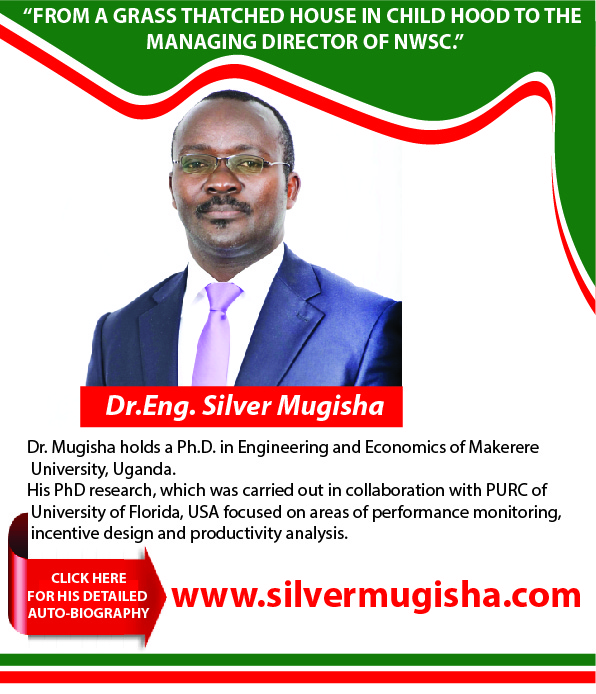MAKERERE LECTURER AMANDA GIVES OPINION ON URBANIZATION
www.mknewslink.com
In Kampala—
Smart Cities and Mobility as presented at the 11th annual symposium of Uganda Society of Architects held on 31st August 2018 at Golf Course Hotel
As cities of the developing world continue to urbanize, they are also under pressure to adopt the smart approach to growth and development.
Generally, cities serve as centers of hope, especially in developing countries, where there are sharp differences in the distribution of services and employment opportunities. They are also centers of hope for governments and private investors. This has an obvious impact on the city system and its functionality, due to the interaction and complexity of several urban development aspects. Notably, this also leads to increased demand for travel within urban clusters and their hinterlands. Consequently, this tends to result in unprecedented sprawl, which in turn translates into increased travel time and distances. People are forced to drive everywhere, a trend that is unsustainable and affects the general quality of life. Unfortunately, this seems to be the case in our capital, and greater Kampala area. The city is currently faced with rising levels of private motorization, amidst road expansion and improvement projects, aimed at majorly facilitating the smooth flow of vehicular traffic. The use of boda bodas is also still unavoidable mainly due to the traffic congestion, lack of an efficient public transport system and the obvious sprawled land uses. In fact the boda boda is operating as a public mode of transport-with very low carrying capacity; and this makes it an unsustainable mode for any city with a ‘smart’ vision to rely on.
Generally, if planners aim at having a green city, the center of its mobility planning ought to focus more on sustainable modes of transport-modes that ‘move people and not cars.’ And this shouldn’t be interpreted as a war against cars but a process towards a green and smart city; whereby green & smart imply energy efficient, convenient, consistent, reliable, people-friendly, improved business environment, improved quality of public space, better air quality, and a logical relationship between mobility and land use planning. An efficient transport systems should have a balanced modal share, where by walking, cycling and public/mass transport are prioritized, given their advantages, while leaving more room for the private car to run more efficiently. It is ironical that cities of the developing world have an ‘enviable’ walking population and yet minimal provision of descent and safe facilities.
As cities grapple with mobility challenges, active mobility plus public transport are definitely the way to go. This, however, will not happen except if governments prioritize and invest in this kind of system; in partnership with the private sector. As far as traffic and transportation planning is concerned, reducing automobile dependence, towards ‘walkable’ urban communities and transit orientation is a critical role planning authorities have to play.
The other factor that ought to be considered while planning for a green/smart city is parking. Both the search for parking and its provision in our city seem to be a regular motorist’s and city planners’ concern, respectively. However, from the evolution of parking, providing for it is a must but its location and capacity matters in relation to sustainability. The more parking provided for within the Central Business District the more private cars are attracted to it. Initiatives like park and ride are necessary in order to reduce the overdependence of the private car. Unless parking is properly managed, with a good parking policy, harmonized with an efficient transport system and existing land uses, it will continue to be a planning challenge affecting the functionality of the city and undermining the principles of a green/smart city.
The third component to be put into consideration by our city planning authority is the hierarchy of the road network in relation to land uses. Currently the road network is mixed up and the categorization is unclear; where all roads can perform all functions, no matter the type of traffic, existing/planned land uses and zones they serve. In such a case, for example, a fuel tanker can easily go through a residential neighborhood; something that does not only pollute the environment but also compromises road safety for residents and their families. This component also must take care of the city drainage.
The fourth component that is rapidly disappearing in Kampala in particular, and Greater Kampala Metropolitan Area (GKMA), is the quality of public spaces. Some may render it is luxurious but it is that space necessary in every city, is owned and should be enjoyed by the individual users at no cost. In relation to quality public space, walkability is a design feature, which enhances community revitalization and enhances civic pride in a city. Also, a combination of transit oriented development and compact neighborhoods, and which are mainly accessed by bus or rail, is a smart step towards reclaiming public spaces in their preferred form. It is important to realize that transportation intersects several segments of societal well being, and economic development. It is an active wheel of sustainable urban development because with or without intervention, mobility will not be interrupted, and somehow there is always a ‘creative’ way to go about it no matter how inefficient it may be.
Obviously, every city is different, and to try to become exactly like another can be detrimental to your specific city sustainable development. But the good news is that the basics are the same and ‘people are just people’. Implementation, coordination, sensitization and enforcement are key in the smart city planning approach. The vision of the city is very important for city planners, policy makers, politicians and the general public. This vision has to be shared and owned, only then can it be achieved. For this reason, all national sectors are expected to have an urban component, especially given the current rate of urbanization. And for the case of Kampala, it is important to have an integrated plan incorporating all the aspects mentioned in this piece, but extract small-scale pilot projects for ease of implementation without shocking the existing establishment.

By Ms. Amanda A. Ngabirano
Lecturer of Urban Planning at Makerere University
E-mail: amanda.ngabirano@gmail.com
Source: www.mknewslink.com a greater western Uganda news website
Email: wmuhwezi75@gmail.com
Tel: +256702680106






























 Views Today : 66
Views Today : 66 Views Yesterday : 451
Views Yesterday : 451 Views Last 7 days : 2849
Views Last 7 days : 2849 Views This Month : 9904
Views This Month : 9904 Total views : 1447508
Total views : 1447508 Who's Online : 1
Who's Online : 1 Your IP Address : 3.15.10.139
Your IP Address : 3.15.10.139